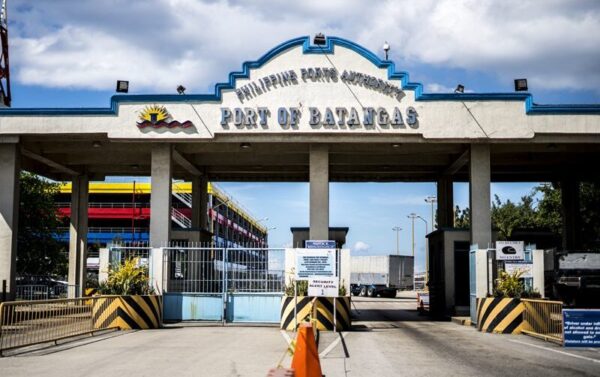Philippines

Batangas International Port [map] is a seaport in Barangay Santa Clara, Batangas City primarily serving the Calabarzon region of the Philippines. The seaport covers an area of about 150 hectares.
Additional Details for Batangas International Port
- Total area: 150 hectares
- Container Berths: 2
- Container Capacity: 130,000 TEUs
Batangas International Port Container Terminal
Berths: 2
Depth: 13m
Quay Cranes: 2
RTGs: 4
Others Equipment: Side loaders, Reach Stackers, Internal Transfer Vehicles, Forklifts
Reefer Outlets: 352
Annual Capacity: +300,000 TEUs System: Navis Sparcs
Introduction to Batangas Port Container Terminal
ATI’s Batangas Container Terminal (BCT) is the most modern container terminal outside the Port of Manila and the best alternative international gateway for shippers based in Calabarzon (Cavite, Laguna, Batangas, Rizal and Quezon).
From a modest start in 2010, BCT has expanded its role as trade facilitator for Calabarzon, providing business with a viable port option that keeps the flow of goods moving, especially amid road constraints and logistics challenges in Manila.
Among its key advantages is accessibility to production hubs within a 60-kilometer distance from the port. BCT is conveniently linked to the STAR tollway and the South Luzon Expressway leading directly to the port, with no truck ban, thus providing a safe and unimpeded road network for the supply-chain.
Just like Manila, all the elements of a world-class terminal are in place at BCT, from equipment, third-party truckers, brokerage, online systems, to Customs processes making it a convenient one-stop-shop for imports and exports.
Complemented by two quay cranes (QC), four rubber-tired gantry cranes (RTG), tractors and other cargo handling gears — following global standards on equipment ratio – the 15-hectare BCT can handle in excess of 300,000 TEUs (twenty-footer-equivalent units) annually, or more than sufficient to accommodate Calabarzon’s current and potential volume.
Anchored on its proximity to the manufacturing hubs of South Luzon, port users have been benefiting from the competitive advantages of BCT, whose volume has grown exponentially driven by the natural shift of south-bound cargoes, growing customer preference and sustained carrier momentum.
On a weekly basis, international carriers call the port to connect shippers to regional hubs like Hong Kong, Singapore, Taiwan, Japan, Indonesia and other global markets.
Coping with the brisk container growth, ATI is continually optimizing vessel, yard and gate processes at BCT through continuous systems and technology upgrades.
